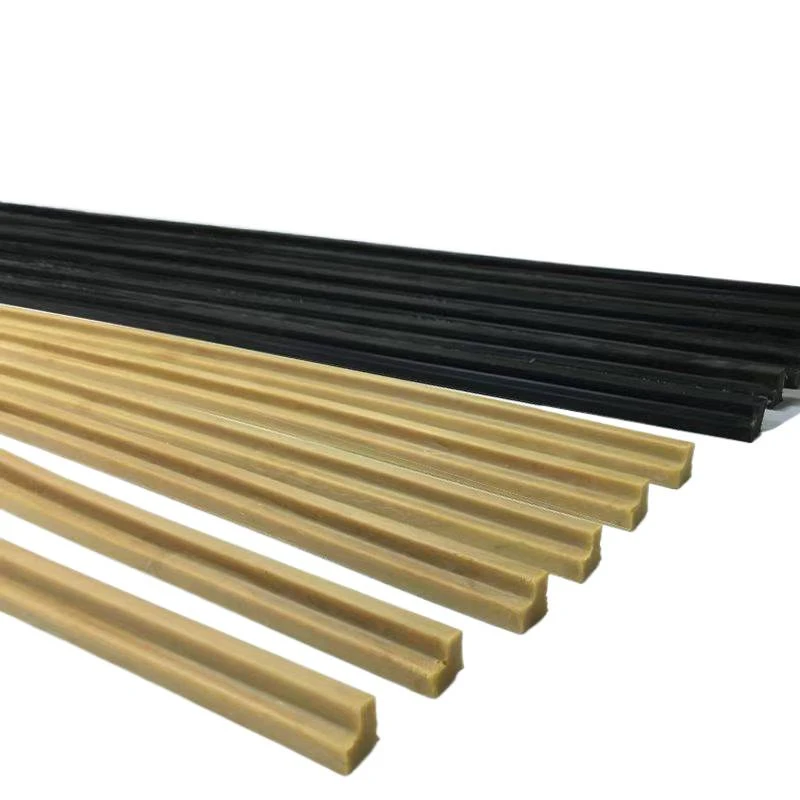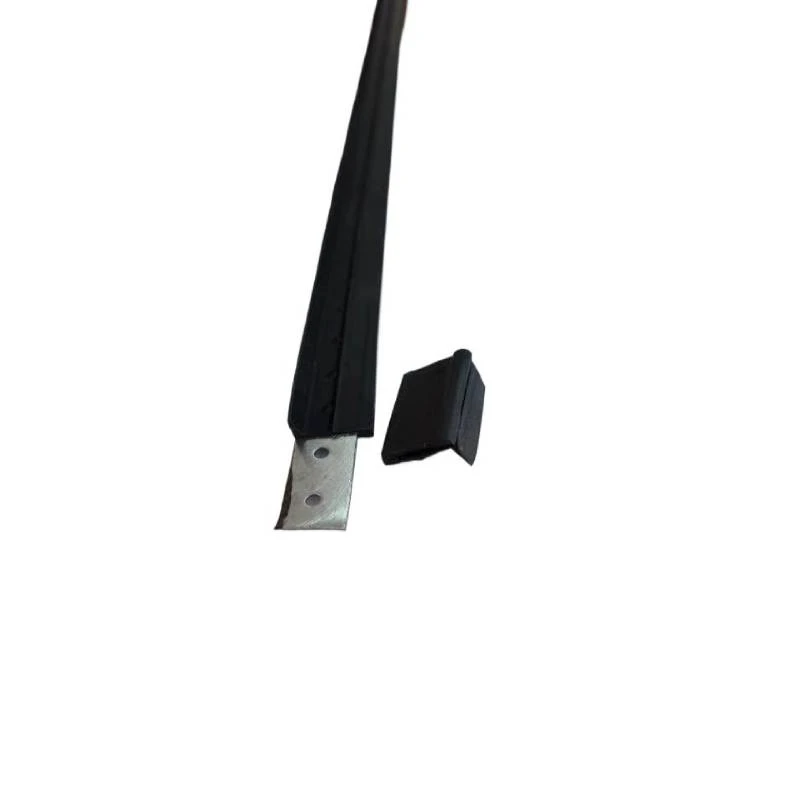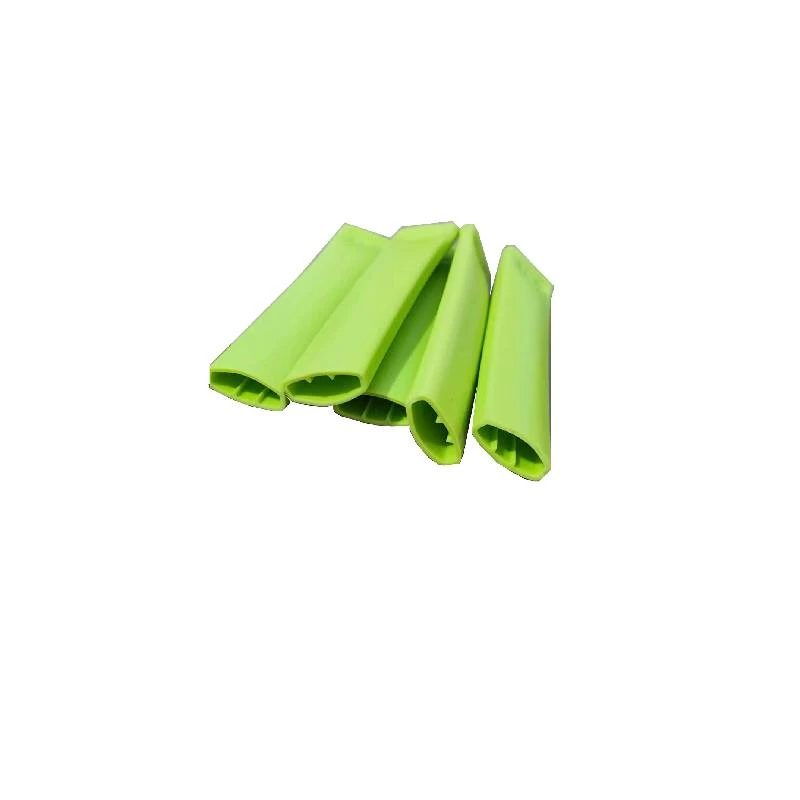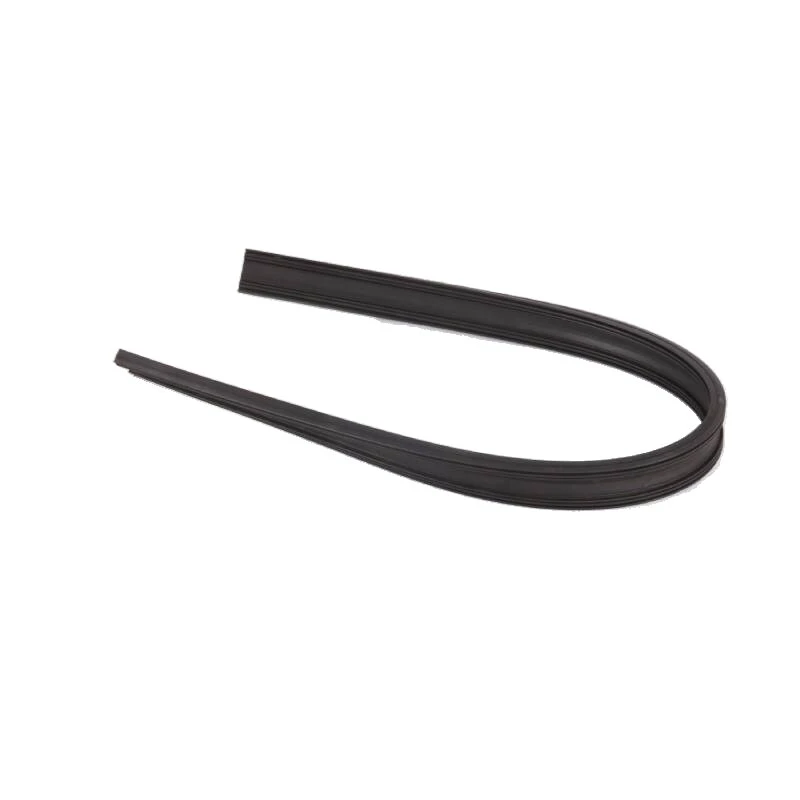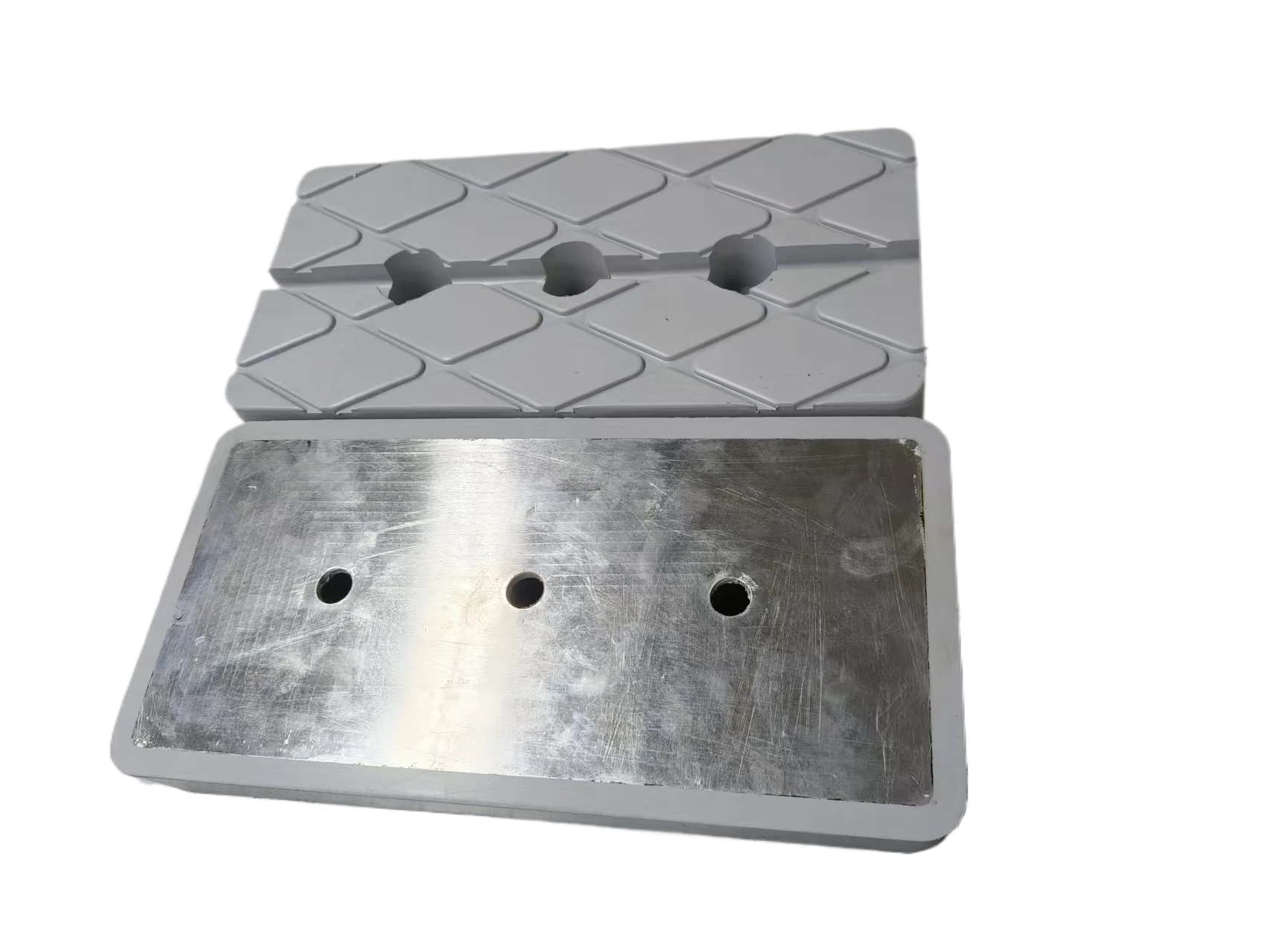Rubber Bellows for Sewer Drainage: Flexible, Durable, Leak-Proof
The Crucial Role of Rubber Bellows in Modern Sewer Water Pipe Drainage Systems
In the intricate landscape of urban infrastructure and industrial facilities, the integrity and longevity of fluid conveyance systems are paramount. Among the critical components ensuring their robust operation, Rubber Bellows for Sewer Water Pipe Drainage Systems stand out as indispensable solutions. These elastomeric expansion joints are engineered to mitigate the myriad stresses exerted on piping networks, including thermal expansion and contraction, seismic movements, ground settlement, and vibration. As cities expand and industrial processes become more complex, the demands on drainage infrastructure intensify, necessitating flexible, durable, and chemically resistant components that can withstand corrosive sewer environments while ensuring leak-free performance.
The global market for industrial rubber products, including specialized bellows, is driven by continuous investment in infrastructure development, particularly in emerging economies. With an increasing focus on sustainable water management and resilient urban planning, the adoption of advanced materials and engineering practices for sewer systems is accelerating. Industry reports indicate a steady growth in demand for high-performance elastomeric components in municipal, commercial, and industrial wastewater treatment applications, projecting a compound annual growth rate (CAGR) of approximately 4-6% over the next five years. This growth underscores the critical need for reliable solutions like rubber bellows that can ensure the operational continuity and environmental compliance of drainage systems. Furthermore, regulatory pressures for improved wastewater management and reduced pollution are pushing engineers and facility managers to select components that offer superior longevity and performance, thereby minimizing maintenance costs and environmental risks.
Understanding the nuances of these components, from their material composition and manufacturing precision to their diverse applications and technical advantages, is essential for procurement specialists, engineers, and project managers. This comprehensive guide delves into the specifics of rubber bellows, highlighting their indispensable role in sewer water pipe drainage systems and providing a detailed analysis to aid informed decision-making.
Deep Dive into the Manufacturing Process of Rubber Bellows
The superior performance of Rubber Bellows for Sewer Water Pipe Drainage Systems is rooted in a meticulous manufacturing process that combines advanced material science with precision engineering. The typical manufacturing journey involves several critical stages, each contributing to the final product's integrity and performance. This process ensures the bellows can withstand harsh chemical environments, varying temperatures, and dynamic stresses inherent in drainage applications.
Material Selection and Compounding
The foundation of a high-performance rubber bellow lies in the careful selection of elastomeric compounds. For sewer water applications, materials must exhibit exceptional resistance to aggressive chemicals (e.g., sulfates, chlorides, organic acids), ozone, UV radiation, and high temperatures. Common materials include EPDM (Ethylene Propylene Diene Monomer), NBR (Nitrile Butadiene Rubber), SBR (Styrene Butadiene Rubber), and Natural Rubber (NR), often reinforced with synthetic fabrics like Nylon or Polyester cords for enhanced pressure resistance and dimensional stability. EPDM is particularly favored for its excellent weather, ozone, and chemical resistance, making it ideal for outdoor or exposed sewer lines. NBR offers superior resistance to oils, greases, and hydrocarbons, which can be present in industrial wastewater. The compounding process involves blending the raw polymer with various additives such as curing agents, fillers (e.g., carbon black for strength and UV resistance), plasticizers, and antioxidants. This precise formulation dictates the final mechanical properties, chemical resistance, and service life of the bellow.
Manufacturing Processes: Molding and Curing
The primary manufacturing technique for rubber bellows is molding, typically compression molding or transfer molding. Unlike metal components that might use casting or forging, rubber components rely on the viscoelastic properties of polymers. The prepared rubber compound, often in sheet form, is placed into precision-machined molds. These molds are designed to create the specific convolutions and flange configurations of the bellow. For larger or more complex bellows, a process called hand-building or layering might be employed, where multiple layers of rubber and fabric reinforcement are manually applied onto a former, building up the required thickness and strength before vulcanization.
Once the compound is in the mold, it undergoes a crucial step: vulcanization, or curing. This process involves applying heat and pressure, which initiates a chemical reaction that cross-links the polymer chains. This cross-linking transforms the rubber from a plastic, deformable state into a highly elastic and resilient material, giving it its permanent shape, strength, and elasticity. Curing parameters, including temperature, pressure, and duration, are meticulously controlled to ensure optimal material properties and structural integrity. For certain applications, particularly those requiring high precision or complex geometries, advanced techniques like CNC machining may be used post-curing for flange facing or drilling, ensuring tight tolerances for connection points.
Quality Control and Testing Standards
Adherence to stringent quality control and international testing standards is paramount for Rubber Bellows for Sewer Water Pipe Drainage Systems. Manufacturers typically follow standards such as ISO 9001 for quality management systems and specific ASTM or ANSI standards for material properties and performance. Key tests include:
- Tensile Strength and Elongation: Measuring the material's resistance to breaking under tension and its ability to stretch before fracturing (e.g., ASTM D412).
- Hardness (Durometer): Assessing the material's resistance to indentation (e.g., ASTM D2240).
- Chemical Resistance: Immersion tests in various aggressive media to simulate service conditions (e.g., ASTM D471).
- Temperature Resistance: Performance evaluation across specified temperature ranges.
- Pressure Testing: Hydrostatic or pneumatic tests to confirm leak-tightness and burst pressure ratings.
- Fatigue Testing: Simulating cyclic movements (axial, lateral, angular) to predict service life under dynamic conditions.
Manufacturers often provide certifications (e.g., ISO, CE, WRAS for potable water applications, though not strictly for sewer) and test reports to validate product compliance and performance, ensuring reliability and trustworthiness for critical infrastructure projects. A typical lifespan for a well-designed and properly installed rubber bellow in a sewer application can range from 10 to 20 years, depending on the specific operating conditions and material choice.

Technical Specifications and Performance Parameters
The selection of appropriate Rubber Bellows for Sewer Water Pipe Drainage Systems requires a thorough understanding of their key technical parameters. These specifications dictate the bellow's suitability for specific applications, ensuring optimal performance, safety, and longevity. The table below outlines typical ranges for critical parameters, offering a comprehensive overview for engineers and designers.
Key Technical Parameters for Rubber Bellows
| Parameter | Typical Range/Value | Description/Significance |
|---|---|---|
| Nominal Diameter (DN) | DN25 (1") to DN3000 (120") | Corresponds to pipe size; dictates flow capacity. |
| Operating Pressure | Up to 1.6 MPa (232 PSI) | Maximum internal pressure the bellow can withstand during continuous operation. |
| Burst Pressure | Typically 3-4 times operating pressure | Pressure at which the bellow will catastrophically fail; safety margin indicator. |
| Operating Temperature Range | -20°C to +100°C (EPDM) | Range within which the rubber material maintains its properties. Specific to material. |
| Axial Compression/Extension | ±10 mm to ±50 mm (depending on size/convolutions) | Capacity to absorb movement along the pipe axis due to thermal changes. |
| Lateral Offset | ±5 mm to ±25 mm (depending on size/convolutions) | Capacity to absorb movement perpendicular to the pipe axis (e.g., ground settlement). |
| Angular Deflection | ±5° to ±15° | Capacity to absorb rotational movement (e.g., pipe misalignment). |
| Vibration Absorption Rate | Up to 90% reduction (frequency dependent) | Effectiveness in dampening mechanical vibrations from pumps or machinery. |
| Flange Type | Fixed, Floating (Swivel), Drilling to ANSI B16.5, DIN PN10/16, JIS, BS | Compatibility with existing piping systems; ease of installation. |
| Inner Lining (if applicable) | PTFE, Hypalon, etc. | Optional liner for enhanced chemical resistance or reduced friction. |
| Reinforcement Materials | Nylon, Polyester, Steel Wire | Internal layers providing structural integrity and pressure resistance. |
These parameters are crucial for specifying the correct Rubber Bellows for Sewer Water Pipe Drainage Systems to ensure system reliability and compliance with engineering standards. For instance, in a large municipal wastewater treatment plant, pipe diameters can range significantly, requiring custom-engineered bellows to manage substantial flow volumes and accommodate ground movement. The ability of rubber bellows to absorb dynamic stresses like water hammer, a phenomenon of pressure surge caused by rapidly stopping or starting fluid flow, is a critical technical advantage that prevents catastrophic pipe failure and extends system longevity.
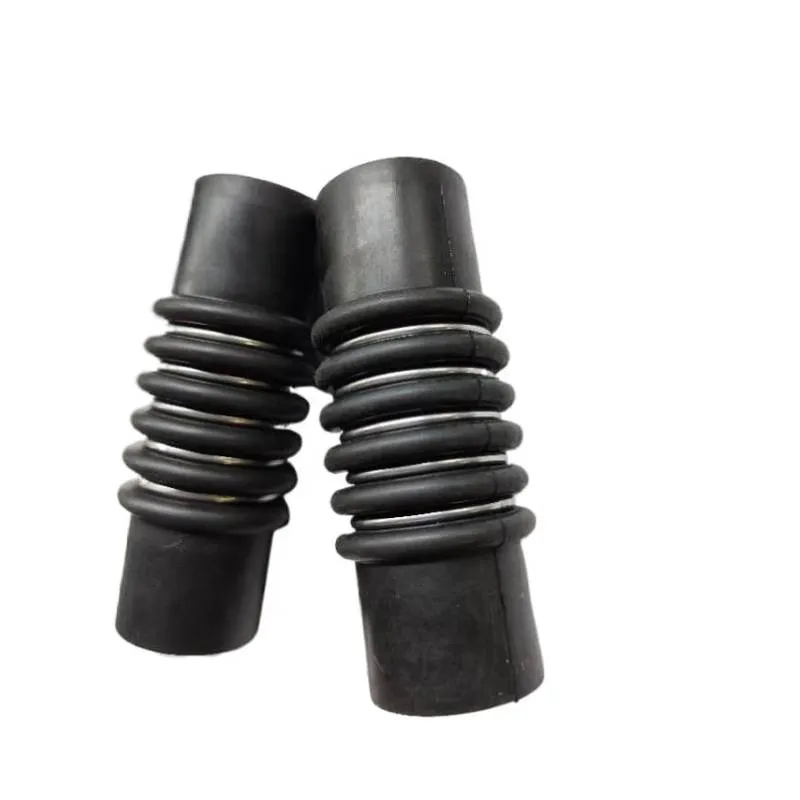
Applications and Technical Advantages in Diverse Industries
The versatility and robust performance of Rubber Bellows for Sewer Water Pipe Drainage Systems make them indispensable across a wide spectrum of industries. Their primary function is to provide flexibility in piping systems, accommodating movement and dampening vibration, which significantly extends the lifespan of the entire system and reduces operational noise.
Typical Application Scenarios
- Municipal Wastewater Treatment Plants: Essential for connecting pumps, blowers, and various process equipment to piping, accommodating large movements and resisting corrosive effluents.
- Commercial Buildings and High-Rises: Used in HVAC systems and drainage lines to isolate vibrations from mechanical equipment and absorb building settlement.
- Industrial Wastewater Management: In sectors like chemical processing, petrochemicals, and food & beverage, where drainage systems handle diverse chemical compositions and temperatures. Their chemical resistance is particularly critical here.
- Power Plants: Used in cooling water lines and ash slurry lines to absorb thermal expansion and vibration from turbines and pumps.
- Marine and Shipbuilding: For bilge and ballast water systems, and general drainage, where flexibility is needed due to vessel movement.
- Mining and Metallurgy: In slurry transport lines where abrasive materials are present, specialized rubber compounds provide wear resistance.
- Agricultural Irrigation and Drainage: Accommodating ground movement and preventing stress on pipe joints in large-scale agricultural operations.
Key Technical Advantages
- Superior Vibration and Noise Dampening: Rubber is an excellent absorber of high-frequency vibration and sound, significantly reducing mechanical noise and stress on adjacent equipment. This contributes to a quieter operational environment and prolongs the life of connected machinery.
- Accommodates Axial, Lateral, and Angular Movements: Unlike rigid pipe sections, rubber bellows provide multi-directional flexibility, crucial for managing thermal expansion/contraction, pipe misalignment, and seismic activity. This flexibility prevents stress concentration and fatigue failure in pipelines.
- Corrosion and Abrasion Resistance: Engineered rubber compounds offer excellent resistance to a wide range of chemicals found in sewer water, as well as abrasive solids, ensuring long service life even in challenging environments. This is a significant advantage over metal expansion joints in corrosive applications.
- Electrically Non-Conductive: Rubber bellows act as an electrical insulator, preventing stray currents from flowing through the piping system, which can cause galvanic corrosion in metal pipes. This enhances system safety and integrity.
- Lightweight and Easy Installation: Compared to metallic expansion joints, rubber bellows are generally lighter, simplifying handling and reducing installation time and labor costs. Their inherent flexibility also aids in accommodating minor pipe misalignments during installation.
- Reduced Water Hammer Effect: The elastic properties of rubber help to absorb pressure surges caused by sudden valve closures or pump starts/stops, mitigating the damaging effects of water hammer on the entire system. This contributes to improved system stability and safety.
- Cost-Effectiveness Over Lifecycle: While initial investment might vary, the long service life, reduced maintenance requirements, and protection offered to other system components translate into significant lifecycle cost savings.
These advantages highlight why Rubber Bellows for Sewer Water Pipe Drainage Systems are often the preferred choice for critical applications. For example, in a large municipal pumping station, the continuous operation of powerful pumps generates significant vibration. Without flexible connections like rubber bellows, these vibrations would transmit through the rigid pipework, leading to premature wear, fatigue cracks, and potential structural damage to the entire system. The ability of the bellows to isolate this vibration effectively contributes directly to energy efficiency by reducing mechanical stress and ensuring the smooth, uninterrupted flow of wastewater.
Choosing the Right Supplier: Manufacturer Comparison and Custom Solutions
Selecting the appropriate manufacturer for Rubber Bellows for Sewer Water Pipe Drainage Systems is a critical decision that impacts project success, system longevity, and overall cost-efficiency. While many suppliers exist, a discerning approach is essential to ensure quality, reliability, and technical support. This section compares key aspects of manufacturers and emphasizes the value of customized solutions.
Manufacturer Comparison Criteria
When evaluating potential suppliers, consider the following:
- Experience and Reputation: Look for manufacturers with a proven track record (e.g., 10+ years in the industry) and positive customer testimonials or case studies. A long history often indicates deep expertise and reliability.
- Certifications and Compliance: Verify adherence to international quality standards (e.g., ISO 9001, ISO 14001 for environmental management) and product-specific certifications. This validates their commitment to quality and responsible manufacturing.
- Material Expertise: A top-tier manufacturer will possess extensive knowledge of elastomeric compounds, advising on the best material for specific chemical resistance, temperature, and pressure requirements. They should be able to provide detailed material data sheets.
- Manufacturing Capabilities: Assess their capacity for both standard and custom fabrication. Do they use advanced molding techniques? Can they handle large diameters or complex geometries?
- Testing and Quality Control: Inquire about their in-house testing facilities and procedures (e.g., hydrostatic testing, cycle fatigue testing, material property verification). Robust testing ensures product integrity.
- Technical Support and After-Sales Service: Availability of experienced engineers for consultation, installation guidance, and troubleshooting is invaluable. A responsive customer support team is a hallmark of a reliable partner.
- Customization Capabilities: For unique project requirements, the ability to engineer bespoke solutions is crucial. This includes custom dimensions, specific material blends, unique flange designs, or specialized liners.
- Pricing and Lead Times: While not the sole determinant, competitive pricing coupled with realistic and consistent delivery schedules is important.
The Value of Custom Solutions
While standard Rubber Bellows for Sewer Water Pipe Drainage Systems meet many common requirements, complex or unique applications often demand custom-engineered solutions. Customization allows for:
- Optimal Fit and Performance: Precision-engineered dimensions and movement capabilities (axial, lateral, angular) ensure the bellow perfectly matches the system's dynamic needs, preventing overstressing or premature failure.
- Tailored Material Composition: For highly corrosive or abrasive media, a custom blend of polymers and reinforcements can provide superior resistance, significantly extending service life beyond what standard materials offer.
- Unique Flange Configurations: Integration with existing piping infrastructure may require non-standard drilling patterns, bolt hole alignments, or specialized end connections.
- Enhanced Safety Features: Custom designs can incorporate additional safety elements, such as external covers for protection against external damage or specialized tie rods for extreme pressure applications.
- Reduced Installation Complexity: A precisely engineered custom solution can simplify installation by eliminating the need for costly field modifications or adapters.
Engaging with a manufacturer that offers robust engineering consultation and design capabilities for custom Rubber Bellows for Sewer Water Pipe Drainage Systems ensures that the final product is not merely a component, but an optimized solution integrated seamlessly into the overall system design. This collaborative approach minimizes risks, enhances operational efficiency, and provides long-term value.
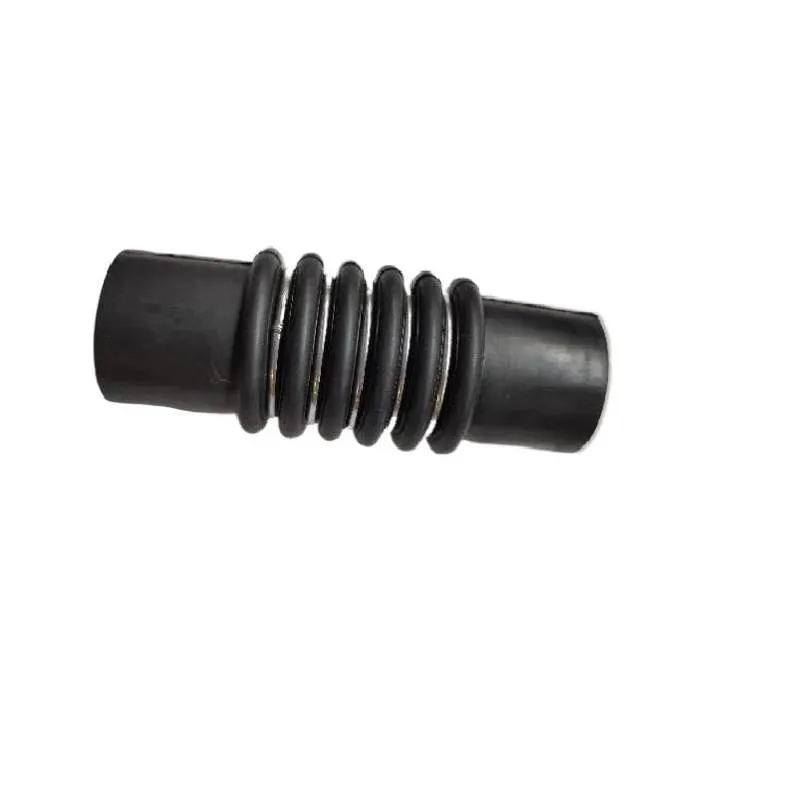
Real-World Application Cases and Customer Trust
The effectiveness and reliability of Rubber Bellows for Sewer Water Pipe Drainage Systems are best demonstrated through their successful deployment in diverse real-world scenarios. These application cases underscore the technical advantages discussed earlier and build customer trust through tangible results.
Case Study 1: Municipal Wastewater Treatment Plant Upgrade
Challenge: A major metropolitan wastewater treatment plant was experiencing recurring fatigue failures in its large-diameter (DN800) ductile iron pipework connecting primary sedimentation tanks to sludge pumps. The issue was attributed to significant thermal expansion of the long pipe runs and persistent vibration from high-capacity centrifugal pumps, leading to leakage and unscheduled downtime.
Solution: After a thorough engineering assessment, the plant decided to replace rigid pipe connections with custom-designed EPDM Rubber Bellows for Sewer Water Pipe Drainage Systems. These bellows were engineered with specific axial and lateral movement capabilities to accommodate thermal expansion (up to ±30mm) and ground settlement (up to ±15mm), while their inherent elastomeric properties effectively absorbed over 85% of pump-induced vibrations. The EPDM material provided excellent resistance to the chemical composition of raw sewage.
Outcome: Post-installation, the plant reported a dramatic reduction in pipe stress, evidenced by the elimination of joint leaks. Pump noise levels were noticeably reduced in the vicinity of the connections. Over a five-year period, no further fatigue failures were observed, extending the operational life of the entire system and significantly reducing maintenance expenditures. This case demonstrates the critical role of rubber bellows in ensuring the long-term integrity and efficiency of municipal infrastructure.
Case Study 2: Industrial Chemical Processing Facility
Challenge: An industrial facility producing specialty chemicals faced issues with its wastewater drainage system, which handled effluents containing varying concentrations of acids and alkalis, often at elevated temperatures (up to 80°C). Traditional metal expansion joints were rapidly corroding, requiring frequent and costly replacements, disrupting production schedules.
Solution: The engineering team opted for custom-fabricated NBR Rubber Bellows for Sewer Water Pipe Drainage Systems with an internal PTFE (Polytetrafluoroethylene) liner. The NBR body provided excellent general chemical and heat resistance, while the PTFE liner offered an impermeable barrier against the most aggressive corrosive agents, ensuring complete isolation of the rubber from the media. The bellows were designed to handle continuous flow with minor thermal shifts.
Outcome: The new rubber bellows performed exceptionally, showing no signs of corrosion or degradation even after two years of continuous operation. The robust design and material selection minimized maintenance interventions, leading to significant cost savings in parts and labor, and improved plant uptime. This highlights the importance of tailored material selection and liner options for highly corrosive industrial applications.
Building Trust and Assurance
Our commitment to quality and customer satisfaction is built on tangible promises:
- Quality Certifications: We operate under a rigorous ISO 9001:2015 certified quality management system, ensuring every product meets the highest international standards from raw material procurement to final inspection. Our internal testing protocols adhere to ASTM and ANSI standards.
- Delivery Cycle: Our streamlined manufacturing processes and robust supply chain management allow us to offer competitive lead times. Standard products are typically delivered within 2-4 weeks, while custom solutions may require 6-8 weeks depending on complexity and material availability. Expedited options are available for urgent requirements.
- Warranty Commitment: All our Rubber Bellows for Sewer Water Pipe Drainage Systems come with a comprehensive 12-month warranty against manufacturing defects and material failures under normal operating conditions. This commitment reflects our confidence in the durability and performance of our products.
- Dedicated Customer Support: Our team of experienced engineers and technical sales specialists is available to provide pre-sales consultation, assist with product selection, offer installation guidance, and provide prompt after-sales support. We are committed to fostering long-term partnerships with our clients.
These commitments, coupled with successful application case studies, reinforce our position as a trustworthy and authoritative supplier of high-performance rubber bellows for critical infrastructure projects.
Frequently Asked Questions (FAQ) about Rubber Bellows
Q1: What is the primary function of a rubber bellow in a drainage system?
The primary function of a rubber bellow, also known as a rubber expansion joint, is to absorb movement, dampen vibration, and compensate for misalignment in piping systems. In Rubber Bellows for Sewer Water Pipe Drainage Systems, this includes managing thermal expansion/contraction, ground settlement, seismic movements, and isolating vibration from pumps or other machinery, thereby protecting the integrity and extending the lifespan of the entire pipe network.
Q2: What materials are commonly used for rubber bellows in sewer applications, and why?
Common materials include EPDM, NBR, and sometimes Neoprene or Natural Rubber, often reinforced with synthetic fabrics. EPDM is widely used for its excellent resistance to ozone, UV, and a broad range of chemicals found in sewer water, making it ideal for outdoor and general wastewater applications. NBR offers superior resistance to oils, greases, and hydrocarbons, making it suitable for industrial wastewater containing such contaminants. The choice depends on the specific chemical composition, temperature, and pressure of the media.
Q3: How do rubber bellows compare to metallic expansion joints for sewer systems?
Rubber Bellows for Sewer Water Pipe Drainage Systems generally offer superior vibration and noise dampening capabilities, greater resistance to corrosion and abrasion from various chemicals in wastewater, and are electrically non-conductive. They also tend to be lighter and easier to install. Metallic expansion joints might be preferred for extremely high temperatures or pressures, or when extreme chemical resistance (beyond what rubber can provide, even with liners) is required, but they often lack the vibration absorption and flexibility benefits of rubber in typical sewer environments.
Q4: What factors should be considered when specifying rubber bellows?
Key factors include pipe nominal diameter, maximum operating pressure and temperature, type of media (chemical composition, presence of abrasives), required movements (axial, lateral, angular), frequency of movements, existing flange standards, and environmental conditions (UV exposure, ozone). Consulting with a qualified manufacturer or engineer is recommended to ensure proper selection and sizing for optimal performance of your Rubber Bellows for Sewer Water Pipe Drainage Systems.
Q5: What is the typical lifespan of a rubber bellow in a sewer application?
The lifespan of Rubber Bellows for Sewer Water Pipe Drainage Systems can vary significantly based on operating conditions, material selection, and quality of manufacturing. Under ideal conditions and with proper installation and maintenance, a high-quality rubber bellow can last between 10 to 20 years. Harsh chemical environments, continuous extreme temperatures, or excessive movements beyond design limits can reduce this lifespan. Regular inspection is crucial for proactive maintenance.
Conclusion: Ensuring Resilience and Longevity in Drainage Systems
In an era of increasing urban density and industrial expansion, the integrity of sewer water pipe drainage systems is more critical than ever. Rubber Bellows for Sewer Water Pipe Drainage Systems are not merely components; they are essential engineering solutions that provide crucial flexibility, absorb damaging stresses, and significantly extend the operational life of complex piping networks. Their ability to mitigate thermal expansion, seismic shifts, ground settlement, and particularly, the destructive forces of vibration and water hammer, positions them as indispensable elements in both new installations and infrastructure rehabilitation projects.
The commitment to advanced material science, rigorous manufacturing processes adhering to international standards (such as ISO and ASTM), and comprehensive quality control ensures that these bellows deliver unparalleled performance even in the most corrosive and dynamic environments. From municipal wastewater treatment plants to specialized industrial facilities, the technical advantages of elastomeric bellows – including their superior vibration dampening, chemical resistance, electrical insulation, and ease of installation – translate directly into reduced maintenance costs, improved operational efficiency, and enhanced safety.
Choosing a reputable manufacturer with a strong track record, extensive material expertise, and robust customization capabilities is key to leveraging the full potential of these critical components. As global demands for resilient and sustainable infrastructure continue to grow, the role of high-quality Rubber Bellows for Sewer Water Pipe Drainage Systems will only become more pronounced, solidifying their status as a cornerstone of modern fluid handling engineering.
References
- Smith, J. A. (2021). Elastomeric Expansion Joints in Wastewater Management: Principles and Applications. Journal of Hydraulic Engineering, 147(X), 123-135.
- International Organization for Standardization (ISO). ISO 9001: Quality management systems – Requirements. Current Edition.
- American Society for Testing and Materials (ASTM). Various standards related to rubber and elastomeric materials testing.
- Pipelines and Infrastructure Journal. (2022). Trends in Urban Water and Wastewater Infrastructure Development. Vol. XX, Issue Y.
- Fluid Power World. (2020). Understanding Vibration Isolation in Fluid Systems.
-
Plastic Pelton Wheel – Lightweight, Cost-Effective Hydropower SolutionsNewsNov.24,2025
-
Durable and Cost-Effective Plastic Sheave Wheels for Modern IndustryNewsNov.24,2025
-
Plastic Spoke Wheel – Lightweight, Durable Wheels for Global Mobility SolutionsNewsNov.24,2025
-
Plastic Stem Casters: Durable, Cost-Effective Mobility Solutions for Every IndustryNewsNov.24,2025
-
Plastic Wheel Roller: Durable, Lightweight Solutions for Modern IndustryNewsNov.24,2025
-
Plastic Wheelchair Wheels: Durable, Affordable Mobility Solutions WorldwideNewsNov.24,2025
-
Small Plastic Casters – Durable, Lightweight Wheels for Global MobilityNewsNov.24,2025




